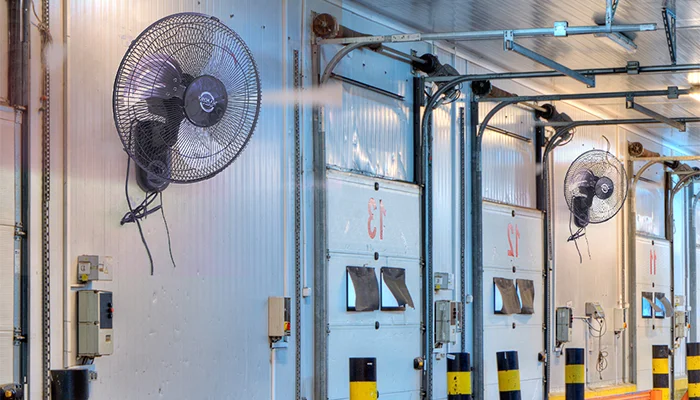
The field of industrial ventilation has undergone a profound transformation, evolving from rudimentary mechanical fans to highly sophisticated, data-driven systems. In contemporary industrial and manufacturing environments, heavy-duty fans are no longer merely passive air-moving devices; they are critical components of an intelligent, interconnected infrastructure.. The integration of artificial intelligence, real-time data analytics, and energy-efficient materials is driving a paradigm shift, optimizing air circulation while minimizing operational expenditures.
This article delves into the cutting-edge innovations that are redefining heavy-duty fan technology, with a particular focus on automation, sustainability, and predictive maintenance.
The convergence of heavy-duty fan technology with the Internet of Things (IoT) represents a pivotal advancement in industrial airflow management. By equipping fans with an array of intelligent sensors, real-time data can be harvested to monitor variables such as airflow velocity, temperature gradients, humidity levels, and overall system efficiency. Centralized control systems process this data, enabling facility managers to execute dynamic adjustments remotely.
Furthermore, predictive analytics—a key feature of IoT-enabled smart fans—allows for the early detection of operational anomalies, such as excessive vibrations, overheating, or gradual component degradation. This predictive capability facilitates preemptive maintenance, significantly reducing unscheduled downtimes and extending the service life of ventilation systems. As industrial enterprises continue to prioritize operational intelligence, the deployment of remote monitoring solutions is rapidly becoming a standard rather than a luxury.
Heavy-duty fans incorporating variable speed drive (VSD) technology and adaptive cooling mechanisms represent a major breakthrough in industrial ventilation efficiency. Unlike legacy systems that operate at a fixed output regardless of environmental conditions, VSD-equipped fans dynamically adjust their operational parameters in response to fluctuating ambient temperatures and airflow demands.
Adaptive cooling systems utilize advanced machine learning algorithms to continuously analyze data from temperature and humidity sensors, enabling real-time modulation of airflow distribution. By employing closed-loop feedback mechanisms, these systems ensure that power consumption is optimized, eliminating unnecessary energy expenditures while simultaneously enhancing workplace thermal comfort. Additionally, such adaptive configurations are indispensable in high-risk industrial settings where precise ventilation control is required to mitigate airborne contaminant accumulation and maintain regulatory compliance.
As industrial sectors intensify their focus on sustainable operations, heavy-duty fans equipped with energy-efficient innovations are playing an instrumental role in achieving carbon footprint reduction objectives. The integration of intelligent control algorithms has significantly improved the energy profile of modern ventilation systems, ensuring that airflow delivery is precisely calibrated to actual demand rather than arbitrary preset levels.
Several key technological developments are driving this energy transition:
By implementing these innovations, industrial facilities not only enhance their energy efficiency but also strengthen their compliance with stringent regulatory frameworks governing emissions and energy consumption.
The evolution of heavy-duty fan technology is progressing toward an era characterized by deep integration with AI, predictive analytics, and industrial automation. As manufacturing and industrial facilities continue to emphasize cost efficiency, environmental sustainability, and workplace safety, the demand for intelligent ventilation solutions will escalate.
As industrial ecosystems become increasingly interconnected, heavy-duty fans will serve not only as air-moving devices but as fundamental components of a broader, intelligent industrial infrastructure. Organizations that strategically adopt these innovations will position themselves at the forefront of operational efficiency and sustainability, ensuring their competitive edge in the rapidly evolving industrial landscape.